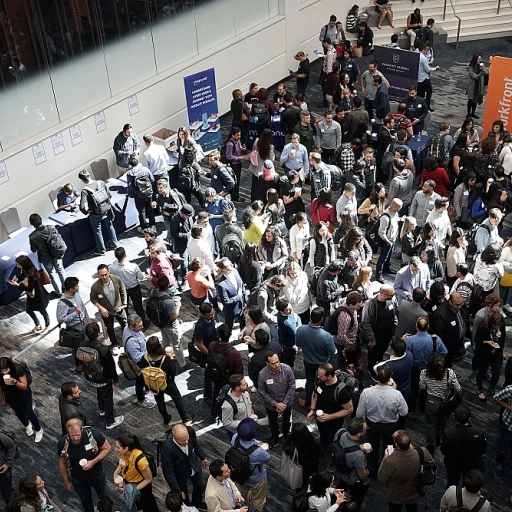
The Role of Employee Feedback in Retention
The Crucial Connection between Feedback and Retention
In the realm of employee retention, feedback stands as a pivotal element. Without understanding the sentiments of the workforce, organizations often find themselves adrift in the challenging sea of employee turnover. Feedback, when effectively harnessed through platforms like glint and viva, transforms into actionable data that allows teams to create meaningful changes within their organization.
Recurrence is key. Implementing recurring surveys rather than one-off feedback collection efforts provides a comprehensive view across the employee lifecycle. Such a strategy not only reveals the evolving aspects of employee sentiment but also sets up a responsive engagement environment, wherein employees feel that their voices are not only heard but valued. This proactive approach reflects the principles of people science, ensuring that organizations align with best practices in maintaining a motivated workforce.
It's necessary to track various aspects, including manager effectiveness, diversity and inclusion, and overall business health. Tools like Microsoft Viva and other survey programs, such as copilot viva, help simplify these processes. By integrating technology, organizations can systematically utilize feedback to propel business success. Such feedback mechanisms not only improve management practices but ensure that every layer of the organization is geared towards a unified mission.
To implement a successful feedback mechanism and integrate changes effectively, refer to strategies on enhancing employee retention through effective feedback practices. By fully embracing feedback as a central component of organizational strategy, businesses not only keep top talent but also foster a thriving and dynamic work environment.
Key Metrics to Track in Glint Surveys
Essential Metrics for Assessing Survey Success
Employee feedback is the backbone of knowing where an organization stands, especially concerning employee retention. Glint surveys, particularly when integrated into the Microsoft Viva platform, empower businesses to track several critical metrics. Here's a breakdown of the key areas to focus on:- Engagement Levels: One of the main content drivers for Glint surveys is determining employee engagement. By assessing how engaged teams feel, businesses can identify issues early in the employee lifecycle that might lead to turnover.
- Employee Sentiment: This metric provides insights into how employees feel about their roles, their teams, and the organization. Recurring surveys are effective in monitoring changes in sentiment over time, revealing trends that need to be addressed through feedback and action plans.
- Diversity and Inclusion: Glint programs help measure how inclusive your workplace environment is. Survey outputs should highlight areas for improvement, fostering a more inclusive culture.
- Manager Effectiveness: Feedback from employees can aid organizations in evaluating the effectiveness of their management. How managers lead their teams and provide feedback can significantly influence retention rates.
Interpreting Glint Survey Results
Unlocking the Meaning of Survey Insights
Interpreting the results from Glint surveys is an essential step to drive meaningful change in any organization. The data gathered through these surveys provides a snapshot of employee sentiment and engagement levels. By evaluating these insights, businesses can pinpoint areas that need improvement and build stronger connections with their teams. To begin with, it's important to look at key metrics. Metrics such as manager effectiveness, employee sentiment, and engagement levels are pivotal. Each of these offers unique insights into how employees perceive their work environment and leadership in the organization. One of the primary goals should be to identify trends over time. Recurring surveys play a crucial role in this. By regularly checking in with employees through these surveys, organizations can track improvement or decline in various metrics. This recurring survey mechanism helps to establish a reliable dataset, making it easier for HR teams and leadership to make informed decisions. The science behind people’s feedback cannot be understated. Adjusting Viva Glint settings and utilizing Microsoft’s survey templates can provide a standardized yet tailored approach, allowing an organization to draw meaningful comparisons across departments and periods. There is also significant value in segmenting data. Different employee groups may have distinctly different perceptions, which highlights the importance of looking into diversity and inclusion metrics. Each segment of employees might offer different feedback, which should be taken into account to implement targeted interventions. Remember that interpreting survey results effectively requires a multi-faceted approach. Including diverse perspectives from different teams, and understanding the employee lifecycle can also contribute to a more holistic view. Additionally, utilizing tools like Microsoft Copilot in conjunction with feedback analysis can simplify complex data sets, turning them into actionable insights. Integrating feedback from Glint surveys into engagement programs is therefore not just about reading numbers—it's about creating a cohesive narrative of your organization’s health. Consider innovative ways to engage teams, such as engaging virtual team building activities, to reinforce the positive aspects identified and address any concerns highlighted through comprehensive analysis of survey results. Ultimately, the goal is to use these insights to align your organization’s strategies closely with employee needs, fostering a business culture that promotes employee retention and satisfaction.Implementing Changes Based on Survey Feedback
Implementing Effective Changes with Feedback
The process begins with a clear understanding of the survey results. This requires using data to identify the areas where improvements are most needed. Once key issues are pinpointed, teams can set specific, measurable goals aimed at addressing these concerns.
In setting these goals, it is crucial to rely on science-backed methodologies. Some principles to guide this include:
- Engagement and Inclusivity: Ensure changes consider diversity, inclusion, and become part of the recurring survey programs to maintain constant improvement.
- Collaboration Across Teams: Utilize tools like Microsoft Viva and Glint to bring departments together, promoting an integrated approach to problem-solving.
- Transparent Communication: Share the feedback and planned actions with employees. A clear line of sight into the how and why decisions are made fosters trust and encourages ongoing, honest feedback.
- Manager Empowerment: Focus on enhancing manager effectiveness. Empowering managers with tools like Microsoft Copilot can improve how they interact and support their teams, creating a positive impact on employee sentiment.
Organizations should also consider utilizing available survey templates to ensure their surveys are comprehensive and aligned with best practices, enhancing the overall feedback employee process. In conclusion, turning feedback into action requires a concerted effort and a strategic mindset. When done correctly, it can elevate employee engagement, enhance the business’s operational effectiveness, and ultimately improve the retention rates.












